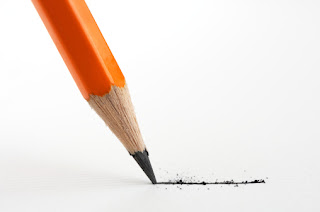Amazing Facts about pencil
Amazing Facts about pencil
Certainly! Here's a pencil fact for you:
The average pencil can draw a line 35 miles long, although this has never been tested. That's a lot of writing for such a small tool.
Here are some interesting facts about pencils: The word “pencil” comes from the Latin word “pencillus,” which means “little tail”.
History: Pencils have been used for centuries. The modern pencil, with a graphite core encased in wood, was first developed in the 16th century in England.
Graphite, Not Lead: Contrary to popular belief, the "lead" in pencils is not actually lead but graphite. This misconception dates back to when people thought the dark substance used to write with was lead. Graphite is a form of carbon.
Pencil Grading: Pencils come in different grades, which indicate the hardness or softness of the graphite. The most common grading scale ranges from 9H (hardest) to 9B (softest), with HB being the middle point. H pencils are harder and leave lighter marks, while B pencils are softer and create darker lines.
Erasers: Pencils have erasers on one end. These erasers are typically made of synthetic rubber, but some higher-quality pencils have erasers made of natural rubber. Before erasers were invented, people used bread crumbs to erase mistakes.
Mechanical Pencils: In addition to traditional wooden pencils, there are also mechanical pencils. These use a refillable lead instead of a wooden core and can be clicked to advance the lead. The first mechanical pencil factory was located in England, but it was destroyed during World War II.
Pencil Art: Pencils are not just for writing; they are also a popular tool for artists. Pencil drawings can be incredibly detailed and precise, making them a favorite medium for many artists.
Recyclable: Pencils are environmentally friendly as they are made from wood, which is a renewable resource. Even the small pencil shavings can be composted.
Invention: The modern pencil with a wooden casing was popularized by Nicholas-Jacques Conte, a French inventor, in the late 18th century.
Pencil Museum: There is a museum in Keswick, England, called the Cumberland Pencil Museum, dedicated to the history of pencils and the pencil-making process.
Pencils in Space: Pencils were used by astronauts in space before the development of "space pens." Unlike ballpoint pens, pencils don't rely on gravity to work. Pencils can write in zero gravity and under water.
Pencils are simple yet versatile tools with a fascinating history and various uses beyond just writing.
Ernest Hemingway and John Steinbeck both used pencils to write their novels.
Faber-Castell is the world’s largest pencil manufacturer, and Ray Bradbury even named a character in Fahrenheit 451 after them.
Writing with pencil has a meditative feel to it, which helps to calm the mind and allow ideas to flow freely. Pencils have been around for years and have evolved over time to make them more user-friendly and convenient. The next time you’re writing or sketching with your favorite pencil, take a moment to consider how far the humble pencil has come. To sharpen up your knowledge, we’ve compiled a list of fascinating facts about pencils.





.png)



Comments
Post a Comment